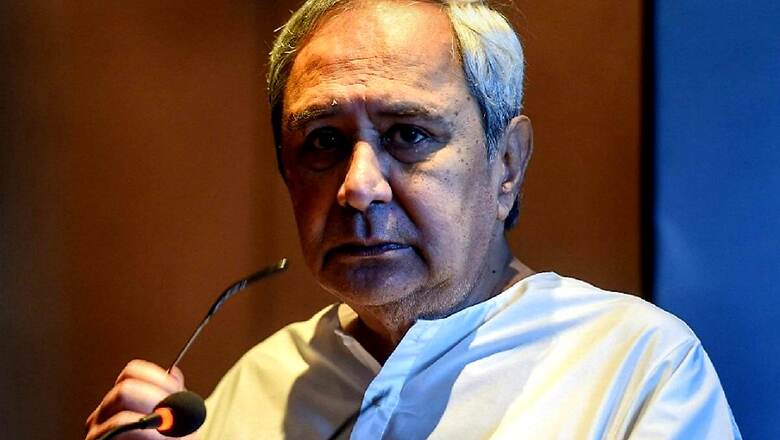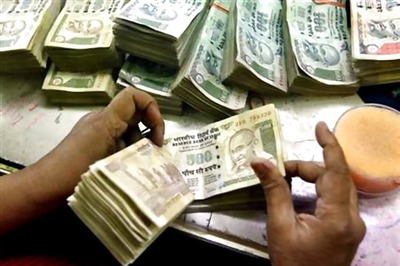
views
New Delhi: When Prime Minister Narendra Modi met Odisha Chief Minister Naveen Patnaik on Friday in the wake of Cyclone Yaas, he was left stumped by the CM when he said the state was not seeking any immediate financial assistance from the Centre and would manage through its own resources for now. “We do not want to burden you during the pandemic. But we want help for certain long-term measures to make Odisha resilient,” Patnaik told Modi.
These long-term measures spelt out by the chief minister, of having a disaster resilient power infrastructure and resilient coastal protection with storm surge resilient embankments, form the nucleus of Odisha’s policy of learning from each cyclone that hits it and further perfecting its strategy, were also pointers that are said to have impressed the Prime Minister.
Cyclones are not new to Odisha, certainly not lately. “Yaas is the eighth major cyclone to hit Odisha in last 20 years; and in last 30 months, this is the fifth cyclone. In 2018, we had Titli, in 2019 we had Fani and Bulbul, and in 2020 we had Amphan. In the last 24 months, Yaas is the third summer cyclone we have seen after Fani and Amphan,” PK Jena, Odisha Special Relief Commissioner told News18 in an interview over the phone.
The state has a good understanding of monsoon cyclones and knows how to manage them, Jena says. “But the summer cyclone Fani in 2019 was something that the state witnessed after 50-60 years. We learnt a lot from Fani as it was difficult to manage. We learn from every cyclone and our mistakes. We are very open-minded and we try to incorporate these things in our next year planning and capacity development programme. We are on a constant learning curve,” he says.
Three people died in the present cyclone in Odisha but two of them ventured out despite advice of their family and community members to not venture out, Jena says. There is no case of any injury.
Jena says the state is learning from the impact of cyclone Yaas too. “In a monsoon cyclone, we know that flooding is a necessary corollary. But in a summer cyclone, we never thought so. But we had a flood also this time. In Similipal Biosphere, there was a lot of rainfall which created a flood-like situation. There were not many rain-recording stations there too. We found out from local sources of the heavy rain and within four hours, we evacuated people and started sand-bagging to avoid adverse impact. In two river systems, we have seen floods too. THe PM made an aerial visit today,” Jena told News18.
The other learning, Jena says, is to make an attempt to convert some of kuccha houses in coastal areas to pucca houses, as the state feels evacuation of people is not needed from the latter.
“From cyclones in the last two years, we learnt that evacuation must be very carefully designed. A blanket evacuation only adds to figures but creates a problem for everyone. This time, we did a blanket evacuation from all those coastal villages where storm surge was likely to go. We only focused on kutcha houses because pucca houses in the high-impact zones can withstand 300 km per hour wind speed. So, we did not unnecessarily evacuate everybody,” Jena says. He says another learning is that given flooding problem even in summer cyclones, the state will be raising plinth level of its electrical sub-stations and transformers so that power services can be restored quickly.
How Odisha Managed Cyclone Yaas Amid Covid
This time the Indian Meteorological Department (IMD) was not very particular about landfall point and landfall path of cyclone Yaas, Jena says. “They were saying Paradip to Sagar Island…we studied all different models and then we tried to plot everything and find the most probable path. The IMD gives us accurate information but this time when we realized things can go wrong as IMD is not giving pin-pointed path, so we started preparing with some broad parameters. We assumed that it will be between Paradip and Digha, a severe cyclonic storm with 150-160 wind speed and 300 mm rainfall – taking these parameters, we created different scenarios of cyclone’s landfall point,” Jena says.
Learning from Cyclone Amphan, Odisha knew quick restoration of power infrastructure in summer cyclone is very difficult as because of intense heat, people demand immediate restoration and workers cannot work very hard in the intense summer situation.
“So we pre-mobilised and pre-deployed lot of electrical back-up like diesel generator sets. Drinking water also becomes issue in summer cyclone so we deployed mobile water tankers. Five senior secretaries, five senior police officers and a minister was sent to the landfall spot. Yesterday all routes have been opened, all telecom services are now working and 100% power will be restored within two days,” Jena told News18.
A big challenge was also the Covid situation. “In Amphan, Covid first phase was there and the natural disaster happened in the middle of a pandemic. We had no example to follow then so we created an example. Now when we got information on 19 May about Yaas, I spoke to collectors, and said let us identify a large number of alternate shelters because Covid protocol has to be followed and less people have to be kept in our existing shelters. Over 9000 public buildings with toilets and water supply were identified and we evacuated 7.10 lakh people and utilized 8,410 such shelters for them. We supplied masks, sanitisers and medical response teams went sent there to check Covid,” he said.
The other challenge this time was a large number of active cases in the state and many Covid hospitals in the danger zone. “As part of scenario planning exercise, we planned that doors and windows were strengthened and made leak-proof so that structurally those hospitals were safe. We knew that power would fail for maybe for 3-4 days so we got adequate back-up generators and fuel as well as extra doctors and paramedic staff were sent to those hospitals from non-cyclone affected zones. Stocks were replenished so that there is not shortage of medicines and injections for at least 7 days. Oxygen cylinders were mobilized for these hospitals and buffer created for 5 days,” Jena says.
Odisha’s Cyclone History
Patnaik was elected as the CM of Odisha soon after the 1999 super cyclone that killed over 9,000 people in Odisha and left the state in devastation. Odisha then started with a structured organization to deal with disaster, the OSDM and was the first to have a dedicated state response force as part of an institutional framework. “In 2007, we realised that dedicated response force would not be sufficient to meet our requirement. So we strengthened all fire service stations with adequate manpower, equipment, skill-training, so today we have a potential disaster rapid action force and a very skilled fire service in almost 400 fire stations. We also knew government alone cannot do it and community has to be the first responder. So community was strengthened,” Jena says.
Odisha has built community institutions, developed village disaster management plans and has community volunteers for rescue, first aid and counselling in every village. “On 19th June every year we have a state-wide village mock drill where we create cyclone type scenario and see how villagers and local administration respond,” Jena says. With the frequency with which cyclones keep hitting Odisha, the strategy seems to be paying off.
Read all the Latest News, Breaking News and Coronavirus News here. Follow us on Facebook, Twitter and Telegram.




















Comments
0 comment